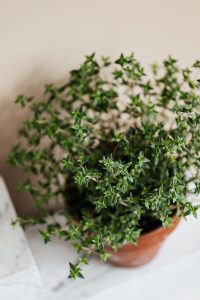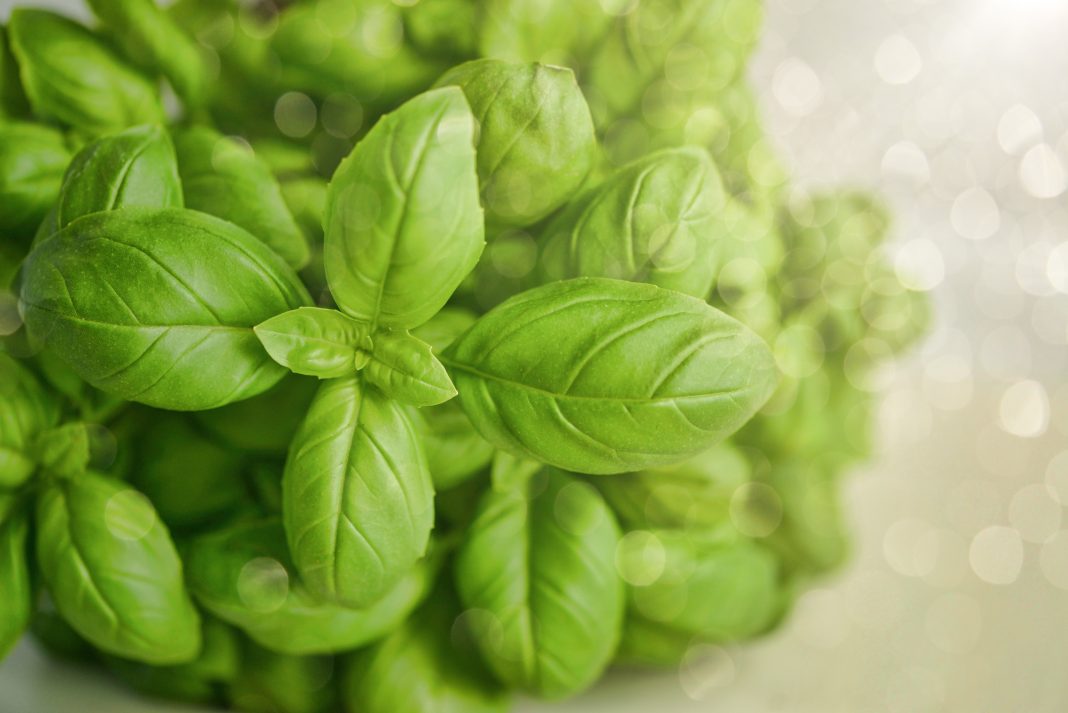Herbs have a long and storied history, with many cultures using them for various purposes. Today, herbs are still popular for both culinary and medicinal uses. When used in cooking, herbs can add flavor and variety to any dish. They can be used fresh, dried, or as an extract. Medicinally, you can consume herbs in various forms, including teas, tinctures, and capsules. Herbs are also sometimes used in aromatherapy. There are many different reasons to use herbs. Some people use them for the flavor they add to food, while others use them for the purported health benefits. Regardless, herbs can be a helpful addition to any kitchen or medicine cabinet.
7 Widely Used Herbs You Should Know About
1. Basil
Basil is perhaps the most popular herb used in cooking today. Its sweet, pungent flavor is perfect for adding a touch of flavor to any dish, and its versatility implies that you can use it in various cuisines. Originally from India, basil is grown worldwide, an essential ingredient in many classic dishes, such as pesto and spaghetti carbonara.
Basil flowers are also edible and are often used as a garnish or decoration on salads and other dishes. The color of these herbs’ leaves can be either green or purple, and the basil most commonly used in cooking are Italian sweet basil, Thai basil, and Holy basil. No matter what type of dish you’re making, there’s a good chance that basil will be the perfect ingredient to give it that extra bit of flavor.
2. Parsley
Parsley is a common herb that is used in many dishes around the world. It is known for its fresh, green flavor and can be used in cooked and raw dishes. Moreover, Parsley is a good source of vitamins A and C and iron. It also contains antioxidants, which can help to protect the body against disease. Parsley is very versatile and can be used in a variety of ways. It can be chopped, added to salads, or used as a garnish on cooked dishes. It can also be blended into pesto or used to make the chimichurri sauce. Whether using it to add flavor or nutrition to your meal, Parsley is an herb you should not overlook.
3. Kratom
Kratom is a tropical native tree in the coffee family native to Southeast Asia. The Kratom leaves are traditionally chewed or dried and made into tea. You can use Kratom for its stimulant effects and as an opioid substitute. Kratom is also used to treat diarrhea, muscle pain, and cough. Some people use Kratom to increase alertness, concentration, and energy, as it contains more than 25 alkaloids, including mitragynine and 7-α-hydroxy mitragynine. Kratom is illegal in Thailand, Myanmar (Burma), Malaysia, and Australia. It is not currently regulated in the United States but has been banned in several states. You can find different kratom strains online; you can buy premium green vietnam kratom, a potent strain.
4. Mint
Of all the herbs in the world, mint is the most popular. This refreshing plant is used in various dishes, from roasted lamb to chocolate desserts. Mint is also a key ingredient in many cocktails, giving them a bright flavor and pleasant aroma. In addition to its culinary uses, this herb is famous for its many health benefits. Studies have shown that mint can help to improve digestion, relieve tension headaches, and even boost your immune system. Mint is also a versatile plant that can be grown indoors or out, making it a perfect choice for any gardener. Whether you’re looking to add flavor to your food or improve your health, mint is an excellent herb.
5. Thyme
Thyme is an evergreen herb with small, square leaves and a strong, somewhat lemony scent. It is one of the most versatile and widely used herbs in cooking and is a staple ingredient in numerous cuisines, including Italian, French, and Mediterranean. You can use Thyme in fresh or dried to flavor poultry, fish, and vegetables. It is a prevalent ingredient in stuffing, soups, and sauces. In addition to its culinary uses, Thyme has been used medicinally for centuries. It is well-known to have antibacterial and antifungal properties and has been used to treat everything from colds and flu to acne and fungal infections. Thyme essential oil is also commonly used in aromatherapy.
You can also check out best quality kratom leaf for premium experience

6. Rosemary
Though small in size, rosemary packs a big flavor punch. This evergreen herb is commonly used in Mediterranean cuisine, lending its distinct taste to various dishes. Rosemary leaves are pretty challenging, so they are chopped or torn before being added to recipes. The herb has a slightly piney flavor with hints of lemon and sage. In addition to its culinary uses, you can also use rosemary for medicinal purposes. The plant is thought to improve circulation and digestion and is a natural remedy for headaches and anxiety. Rosemary can be found fresh, dried, or as an essential oil. When using fresh rosemary, it is vital to remove the woody stems before cooking. You should add dried rosemary early in the cooking process to give it time to rehydrate. A little bit of this flavorful herb goes a long way, so use it sparingly. Whether seasoning a roast or brewing a cup of tea, rosemary is sure to add some extra flavor to your dish.
7. Sage
Sage is among the most widely used herbs in the world. Despite its unassuming appearance, sage has a long history of use, dating back to ancient times. The Greeks and Romans used it as a culinary herb, and later it became associated with wisdom and longevity. In medieval Europe, sage was considered an essential ingredient in many potions and remedies, and it was used as a protective charm against evil spirits. Today, sage is still prized for its healing properties and is commonly used to treat respiratory ailments such as colds and bronchitis. Sage is also a popular flavoring for food, appearing in everything from sausage to stuffing. No matter how you use it, sage remains one of the world’s most beloved and versatile herbs.
For More Amazing Updates, Keep Visiting Trendy News magazine.


